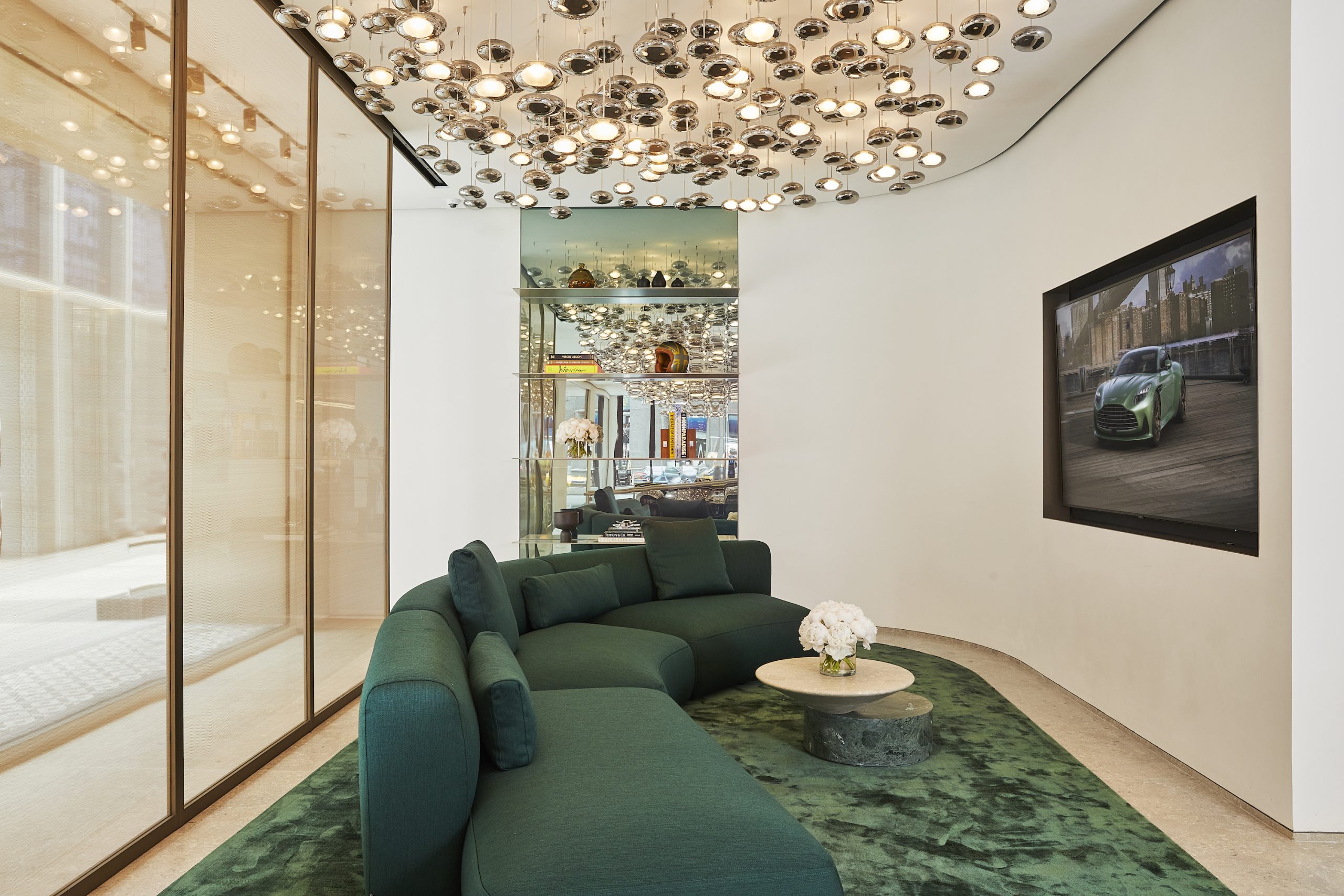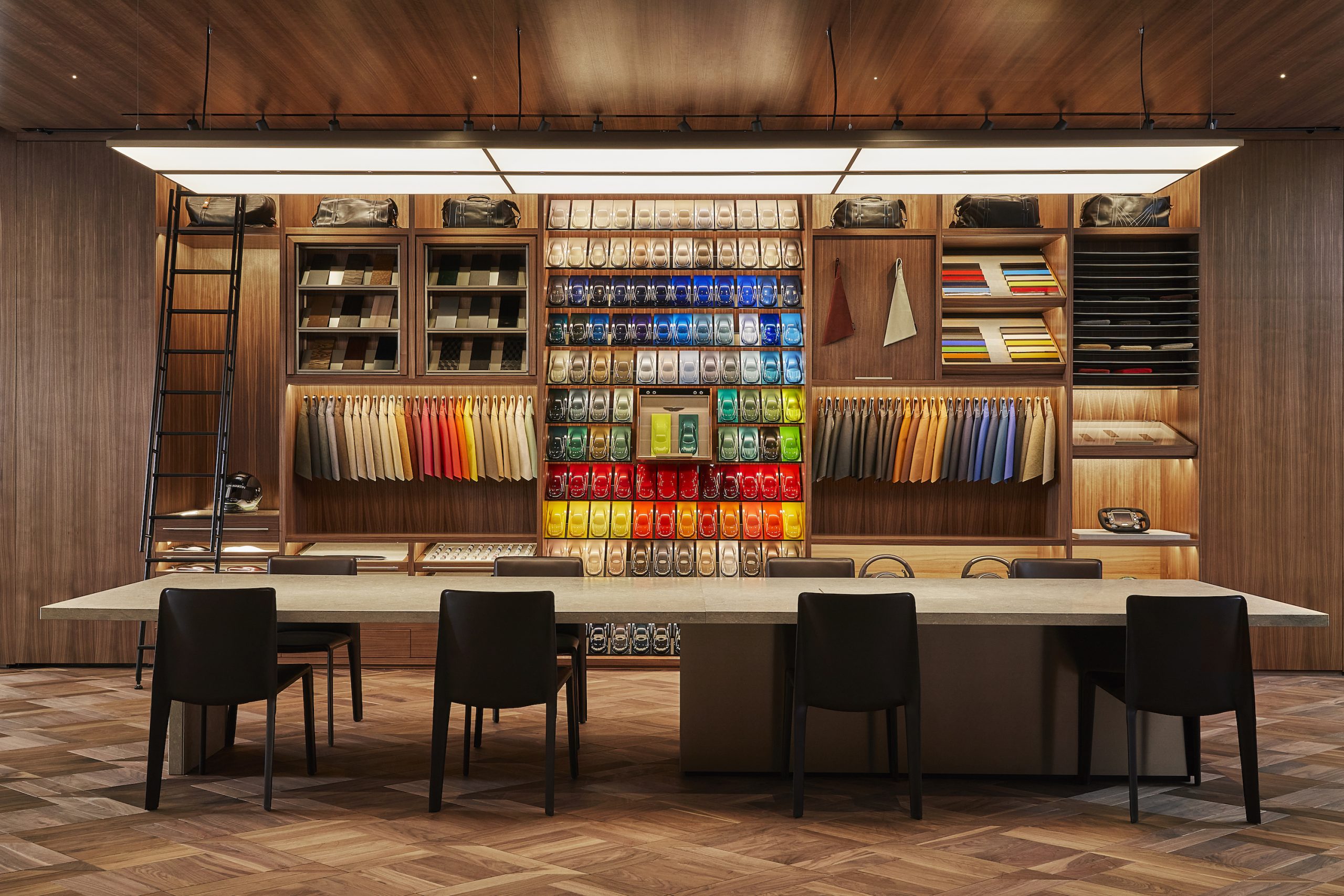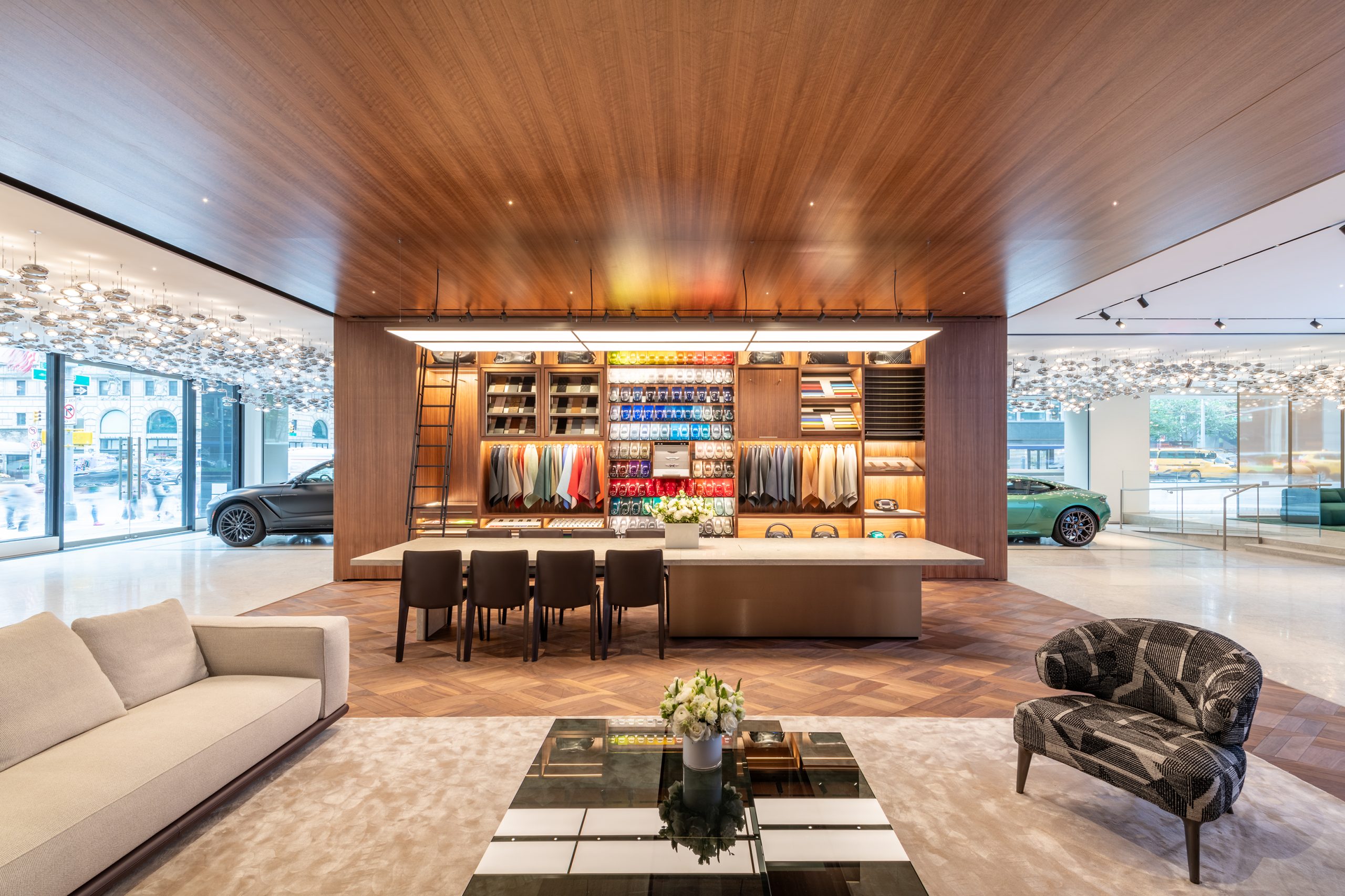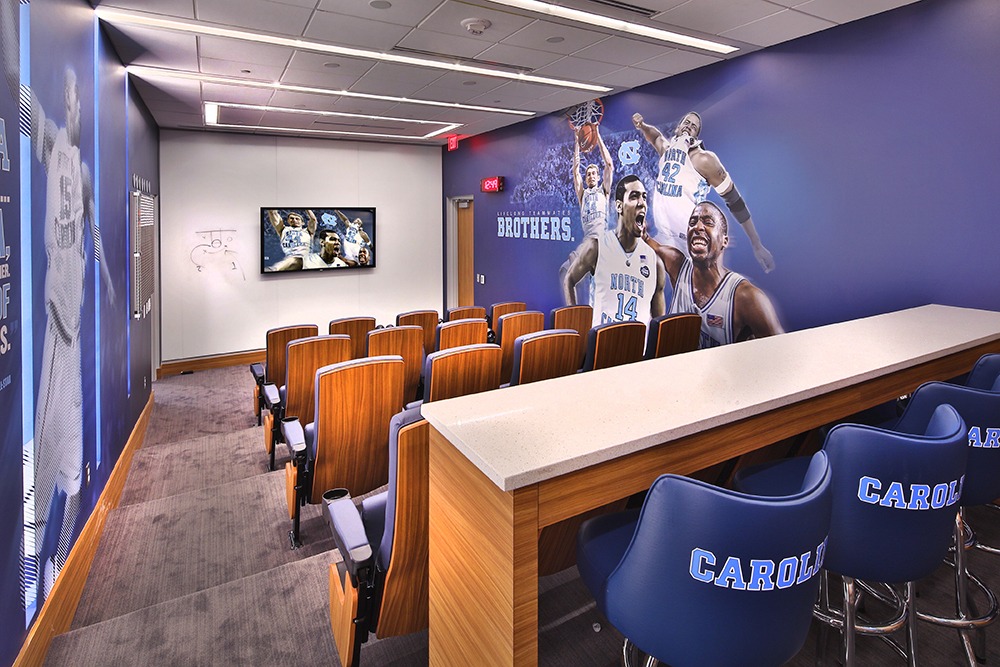He’s done Jimmy Choo in Newport Beach.
Helmut Lang in Atlanta.
And Victoria’s Secret in Savannah.
Now architect Alexander Zilberman, founder of AZA, has designed a showroom for one of Great Britain’s most iconic brands:
Aston Martin.
It’s in Manhattan at Park Avenue and 57th, near a stretch some call “Billionaire’s Row.” That’s because it’s where the big luxury names – Chanel, Dior, Louis Vuitton and Tiffany – reside, just a block away.
“There’s the pedestrian traffic and corporate and commercial traffic on Park Avenue,” he says. “It’s a perfect fit for Aston Martin as far as location goes – there are the fashion houses and luxury brands.”
Which is precisely why Aston Martin chose AZA. The supercar manufacturer, seeking to establish its first showroom in North America, wanted more than an architect. The firm wanted retail experience.
“They wanted a presence, with the feeling is that they are not understood in North America,” he says. “They may be associated with James Bond, but there’s much more than that to what they are.”
And they wanted to show that to in a dramatic way. Aston Martin is, Zilberman says, the ultimate luxury brand, but one that’s also approachable by anyone enthusiastic about cars.
“It’s a marriage between the highest, most advanced level of technology available – with precision and beautiful materials – along with joinery and craftsmanship,” he says.
He worked closely with Aston Martin’s inhouse architects, who talked about creating a space that felt like a fresh, formal drawing room. There was their Britishness too, with a mosaic on the exterior that defined the exterior perimeter, and a formality to the layout like a stately British manor.
Inside, the showroom’s laid in Italian limestone, using the largest slabs the designers could find. “It’s from the manufacturer who had the same limestone that was popular with Palladio,” he says. “Palladio gets credit for discovering it – he used it in a lot of his villas.”
The design for the building itself, a vintage 1970s three-structure, presented its own set of opportunities. The architects installed 20-foot-wide by 11-foot-high single panes of insulated glass, restructuring everything above them.
“There was a priority of connecting the interior to the streetscape and presenting the cars as if they were part of the New York City streetscape,” he says. “But it’s perfect for displaying them in a controlled environment.”
In the process, they respected the iconic building, but separated the showroom as being distinctly Aston Martin.
They also respected the showroom’s former tenant, the Phillips Gallery, which had moved next door. “Now we have this show-window moment with a sculpture from the gallery, as a friendship gesture,” he says.
In fact, it’s a smaller space extracted from a larger gallery designed to display some of the most artistic vehicles on earth.
For more, go here.









